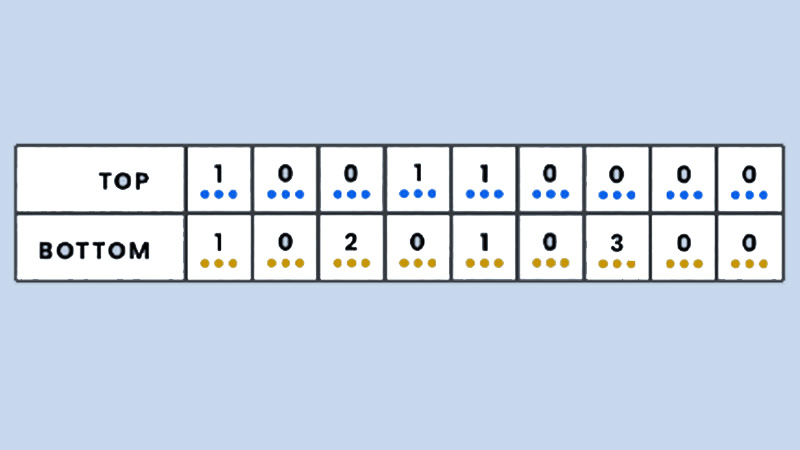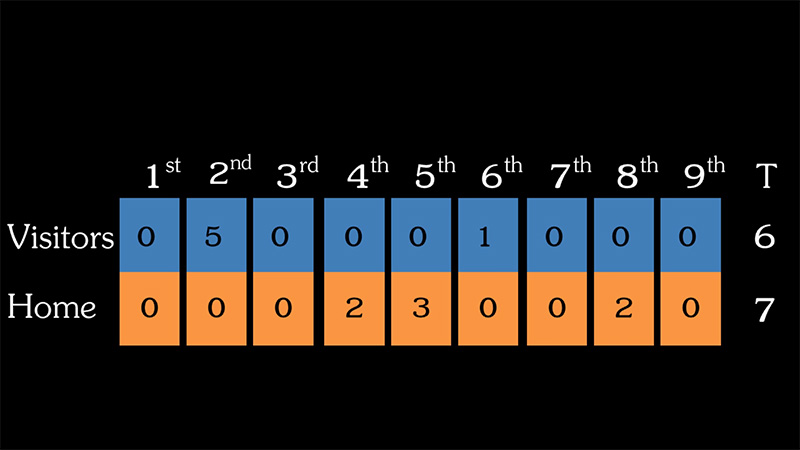In the game of baseball, the concept of innings forms the fundamental framework for gameplay. An inning represents a specific segment of the game during which both teams have the opportunity to bat and field.
Understanding the concept of innings is essential for fans and participants alike, as it provides the structure through which the game unfolds.
In this article, we will explore the significance of innings in baseball, delve into the historical origins and evolution of innings, and examine the roles of the visiting and home teams within the context of a baseball game.
By gaining a deeper understanding of innings, we can better appreciate the strategic decisions, thrilling moments, and records that have shaped the sport over time. So, let’s start the discussion.
What Are Innings in Baseball?
Innings are a fundamental concept in the game of baseball. They provide a structure for organizing the gameplay and determining the duration of a game. In this section, we will delve into the definition and historical origins of innings in baseball.
Explanation of Innings in Baseball
In baseball, an inning refers to a specific unit of the game consisting of both teams having the opportunity to bat and field. Each inning is further divided into two halves: the top half and the bottom half. The visiting team bats in the top half, while the home team bats in the bottom half.
During a half-inning, the batting team sends its players to the plate to try to score runs by hitting the ball and advancing around the bases. The fielding team, on the other hand, aims to record outs by catching the ball or tagging baserunners.
The objective for the batting team is to score as many runs as possible, while the fielding team aims to limit the opposition’s scoring.
Historical Origins of Innings and Their Evolution Over Time
The concept of innings in baseball has evolved over time. In the early days of the sport, games were not structured into innings.
Instead, they were played until a certain number of runs, often referred to as “aces,” were scored by one team. The specific number of aces required to win a game varied.
In 1857, the concept of nine innings became more widely adopted in baseball. This decision was influenced by the desire for a standardized game length and the practical consideration of accommodating teams with nine players each.
Nine innings provided a balanced and consistent structure for games.
Since then, the concept of nine innings has remained a fundamental aspect of baseball. It has been embraced across different levels of the sport, from amateur leagues to professional leagues like Major League Baseball (MLB).
While variations in inning lengths exist in certain levels of play, the traditional nine innings continue to serve as the standard in most contexts.
Innings in baseball serve as a fundamental unit that organizes gameplay and determines the duration of a game.
With its historical origins dating back to the mid-19th century, the concept of nine innings has become an integral part of the sport. Understanding innings is essential for both avid fans and newcomers to appreciate the structure and flow of a baseball game.
Structure of Inning in a Baseball Game

A baseball game is composed of a structured series of innings that dictate the flow and duration of the game.
Overall Innings Structure of a Baseball Game
A baseball game typically consists of nine innings, although certain levels of play may have variations. Each inning is divided into two halves: the top half and the bottom half. The visiting team takes their turn to bat in the top half, while the home team bats in the bottom half.
Breakdown of the Nine Innings
The nine innings serve as the fundamental building blocks of a baseball game. Each team has the opportunity to bat and field in every inning, striving to outscore their opponent. The progression of the innings creates a sense of suspense and momentum throughout the game.
In professional baseball, such as in Major League Baseball (MLB), both teams have an equal chance to bat and field for nine innings, unless one team already secures a victory before the completion of the ninth inning.
Half-innings and Roles of the Visiting and Home Teams
A half-inning is the term used to describe one team’s turn to bat and the other team’s turn to field. The visiting team bats first in the top half of the inning, attempting to score runs and put pressure on the home team’s defense.
After the visiting team has completed their half-inning, the roles reverse. The home team then has their opportunity to bat in the bottom half of the inning, while the visiting team takes on the defensive responsibilities.
The home team enjoys the advantage of batting last, known as “last licks,” as they have the opportunity to respond or potentially walk off with a victory in their final at-bat.
The roles of the visiting and home teams alternate throughout the game, ensuring fairness and equal opportunities for both teams to showcase their skills and strategies.
The Gameplay Within an Inning
Within each half-inning of a baseball game, there is a dynamic interplay between the batting and fielding teams. This section will delve into the gameplay within a single half-inning, including the roles of the batting and fielding teams and their respective objectives.
Gameplay Within a Single Half-inning
A half-inning begins with the team in the field, known as the fielding team, taking their positions on the field.
The pitcher, who stands on the pitcher’s mound, delivers the ball toward home plate, where the batter from the opposing team awaits. The batter’s objective is to make contact with the pitched ball and safely reach base.
Roles of the Batting and Fielding Teams
Batting Team
The batting team’s primary objective is to score runs. When a batter successfully makes contact with the ball, they strive to reach base safely and advance around the bases to eventually touch home plate.
The batter’s teammates, who are positioned at various bases, can also advance around the bases to score runs when the batter gets a hit. The batting team aims to create scoring opportunities through well-timed hits, strategic baserunning, and teamwork.
Fielding Team
The fielding team’s objective is to prevent the batting team from scoring runs and to record outs. Fielders are strategically positioned on the field, with the pitcher and catcher forming the battery.
The fielders work together to catch or field the ball hit by the batter and quickly throw it to the appropriate base to retire the batter or baserunners. The fielding team aims to record three outs to end the half-inning without allowing the batting team to score runs.
The objective of the Batting Team is to Score Runs and the Fielding Team to Record Outs
The batting team’s primary objective is to score runs by advancing baserunners around the bases and having them touch home plate.
They accomplish this by hitting the ball safely, running the bases, and taking advantage of defensive errors or weaknesses. Each time a batter successfully reaches home plate, their team scores a run.
Conversely, the fielding team’s objective is to record outs to prevent the batting team from scoring runs. They aim to catch or field the ball hit by the batter and quickly execute throws to tag or force out baserunners.
Recording three outs in an inning allows the fielding team to end their defensive responsibilities and transition to their turn to bat.
Within a single half-inning of a baseball game, the gameplay involves the batting team striving to score runs and the fielding team working to record outs. The batting team’s objective is to make successful hits, advance baserunners, and ultimately touch home plate to score runs.
On the other hand, the fielding team aims to catch or field the ball, execute accurate throws, and retire the batting team’s players to prevent them from scoring runs.
The interplay between the batting and fielding teams within each half-inning adds excitement and strategic elements to the game of baseball.
Variations in Inning Length
While the standard length of a baseball game is nine innings, there are variations in inning lengths across different levels of the sport.
Variations in Inning Lengths
Inning lengths can vary depending on the level of baseball being played. While the standard is nine innings in professional baseball, other levels may have shorter or longer games.
For example, in Little League baseball, games typically consist of six innings, while high school baseball often features seven innings. College baseball follows the professional standard of nine innings, although doubleheaders may sometimes be shortened to seven innings.
Differences in Inning Lengths
Little League
Little League games are typically played over six innings. This variation accounts for the younger age groups and ensures that games are of an appropriate length for the players’ attention span and physical endurance.
High School
High school baseball games generally consist of seven innings. This allows for a slightly longer game compared to Little League, accommodating the older and more experienced players.
College
College baseball adopts the professional standard of nine innings for regular games. However, in doubleheaders, which involve playing two games in a single day, the innings may be reduced to seven to manage the physical demands on the players.
Professional Baseball
In professional baseball, including Major League Baseball (MLB), the standard game length is nine innings. This standard allows for a comprehensive and competitive game while adhering to tradition and maintaining consistency across teams and leagues.
Impact of Ties, Rain Delays, and Other Factors
Ties
In regular gameplay, baseball games cannot end in a tie. If the game is tied after the completion of nine innings, extra innings are played until one team emerges as the winner. This can potentially extend the length of the game significantly.
Rain Delays
Inclement weather, such as rain, can interrupt a baseball game. If a game is interrupted by weather conditions, it may be delayed or postponed. In such cases, the game can resume later or be scheduled to be completed from the point of interruption. This can lead to games with innings extending beyond the standard length.
Other Factors
Various factors like darkness, curfews, or extenuating circumstances may also influence the length of innings. In certain situations, leagues or organizations may implement rules to accommodate these factors, such as limiting the number of extra innings or allowing for shortened games.
Inning lengths in baseball can vary across different levels of the sport, including Little League, high school, college, and professional baseball.
While the standard is nine innings, adaptations are made to accommodate the age, skill level, and logistical considerations at each level.
Additionally, ties, rain delays, and other factors can impact the length of innings, potentially extending games or leading to shortened or rescheduled contests. Understanding these variations and factors adds depth to the appreciation of the game of baseball.
Strategies and Tactics Within Innings
Strategies and tactics play a crucial role in the game of baseball. Within each inning, teams employ various offensive and defensive strategies to gain a competitive edge.
This section will provide insights into the strategic decisions made by teams within innings, discuss offensive strategies like bunting, stealing bases, and hit-and-run plays, and explain defensive strategies such as pitching changes, defensive shifts, and double plays.
Strategic Decisions Within Innings
Teams make strategic decisions based on the game situation, score, player abilities, and the strengths and weaknesses of the opposing team.
These decisions can include pitch selection, batting order adjustments, defensive positioning, and base running strategies. Effective strategic decision-making within innings can significantly impact a team’s chances of scoring runs or preventing the opposition from doing so.
Offensive Strategies
- Bunting: Bunting involves intentionally tapping the ball softly with the bat to direct it into a specific area of the field. Teams may use bunting as a strategic offensive move to advance baserunners or surprise the defense.
- Stealing Bases: Base stealing occurs when a baserunner attempts to advance to the next base while the pitcher is delivering the ball. Teams strategically choose when to attempt stolen bases to disrupt the defense, put pressure on the pitcher and catcher, and increase scoring opportunities.
- Hit-and-Run Plays: A hit-and-run play involves the baserunner starting to run as the pitch is thrown, while the batter attempts to make contact with the ball. This strategy aims to create holes in the defense and advance the baserunner while the defense is occupied.
Defensive Strategies
- Pitching Changes: Teams may make strategic pitching changes within an inning to exploit matchups, manage pitch counts, or neutralize opposing hitters. Managers assess the situation and bring in relief pitchers who specialize in certain situations or have favorable matchups against specific batters.
- Defensive Shifts: Defensive shifts involve moving fielders from their standard positions to different locations on the field based on the tendencies of the batter. This strategy aims to increase the likelihood of recording an out by positioning fielders in areas where the batter is more likely to hit the ball.
- Double Plays: A double play occurs when the defense records two outs in a single play. Teams strategically attempt to turn double plays by inducing ground balls, executing well-timed throws and tags, and positioning fielders to cover multiple bases efficiently.
Strategies and tactics play a vital role in the success of a baseball team within innings. Teams make strategic decisions based on game situations, player abilities, and the strengths and weaknesses of the opposing team.
Offensive strategies like bunting, stealing bases, and hit-and-run plays aim to create scoring opportunities and surprise the defense. Defensive strategies, such as pitching changes, defensive shifts, and double plays, seek to prevent the opposition from scoring runs.
Effective strategic decision-making within innings can often be the difference between winning and losing in the game of baseball.
Notable Instances and Records
Throughout the rich history of baseball, there have been notable instances and records related to innings that have left a lasting impact on the sport.
Memorable Games With Extended Innings
Baseball has witnessed several games that have extended well beyond the standard nine innings, captivating fans and creating legendary moments.
For example, the 1984 Major League Baseball (MLB) All-Star Game lasted a record-breaking 15 innings, providing an unforgettable display of skill and competitiveness from the game’s top players.
Similarly, the 2005 National League Division Series Game 4 between the Houston Astros and Atlanta Braves went into an exhilarating 18 innings, becoming the longest postseason game in MLB history.
The Longest Recorded Baseball Game in History
The longest-recorded baseball game in history occurred on April 18-19, 1981, in a Triple-A contest between the Pawtucket Red Sox and the Rochester Red Wings. This remarkable game lasted 33 innings, spanning over eight hours and two different days.
The game was eventually suspended due to curfew and adverse weather conditions. When the game resumed more than a month later, the Pawtucket Red Sox secured a victory in the 33rd inning.
Other Notable Records Related to Innings
- Most Innings Pitched by a Single Pitcher: The record for the most innings pitched by a single pitcher in a game stands at 26 innings, achieved by Joe Oeschger and Leon Cadore during a game between the Boston Braves and the Brooklyn Robins in 1920. This marathon pitching duel ended in a 1-1 tie.
- Most Runs Scored in a Single Inning: The record for the most runs scored by a team in a single inning is 17. This feat was achieved by the Chicago White Stockings against the Detroit Wolverines on September 6, 1883, in the National League.
- Most Consecutive Scoreless Innings Pitched: The record for the most consecutive scoreless innings pitched by a pitcher is held by Orel Hershiser, who threw 59 consecutive scoreless innings for the Los Angeles Dodgers in 1988. This remarkable streak included a complete game shutout in the final game of the regular season.
Baseball has witnessed memorable games with extended innings, including the record-breaking 33-inning contest between the Pawtucket Red Sox and the Rochester Red Wings.
Other notable records related to innings in baseball include the most innings pitched by a single pitcher, the most runs scored in a single inning by a team, and the most consecutive scoreless innings pitched.
These records and instances highlight the enduring excitement and extraordinary achievements within the realm of innings in baseball, contributing to the storied history of the sport.
How Many Innings in Baseball Playoffs?
In the baseball playoffs, the number of innings remains the same as in regular-season games, which is nine innings for most levels of play.
The playoffs follow the same format as the regular season, with each game consisting of nine innings unless there is a tie at the end of nine innings, in which case extra innings are played until a winner is determined.
This applies to postseason games at the professional level, such as Major League Baseball (MLB) playoffs, as well as playoffs in other baseball leagues and tournaments.
The playoffs provide an intensified and high-stakes environment where teams compete to advance toward the ultimate goal of winning the championship.
Notable Records Related to Innings in Baseball
| Record | Description |
| Longest Recorded Baseball Game | April 18-19, 1981: Pawtucket Red Sox vs. Rochester Red Wings – 33 innings, over 8 hours, 2 days |
| Most Innings Pitched by a Single Pitcher | Joe Oeschger and Leon Cadore – 26 innings, Boston Braves vs. Brooklyn Robins, 1920 |
| Most Runs Scored in a Single Inning | Chicago White Stockings – 17 runs, vs. Detroit Wolverines, September 6, 1883, |
| Most Consecutive Scoreless Innings Pitched | Orel Hershiser – 59 consecutive scoreless innings, Los Angeles Dodgers, 1988 |
FAQs
Can a baseball game end in a tie?
No, a baseball game cannot end in a tie at most levels of play. If the game is tied after the completion of nine innings, extra innings are played until one team emerges as the winner.
However, there may be exceptions in certain leagues or circumstances where ties are allowed due to time constraints or other factors.
Are there any restrictions on the number of extra innings that can be played?
A: Generally, there are no specific restrictions on the number of extra innings that can be played in baseball. The game will continue with additional innings until one team scores more runs than the other at the end of a completed inning.
However, in some leagues or tournaments, there may be rules or agreements in place to limit the number of extra innings, especially for scheduling or logistical reasons.
What happens if a baseball game is interrupted by rain or other inclement weather?
If a baseball game is interrupted by rain or other inclement weather, the game may be delayed or suspended. The decision to delay or suspend the game depends on the severity of the weather and the field conditions.
Once the weather improves, the game may resume from the point of interruption or, if necessary, be rescheduled to a later date.
Can a baseball game be called off before completing the required number of innings?
Yes, a baseball game can be called off before completing the required number of innings if it is deemed official by the league or governing body. Typically, a game must complete at least five innings (or 4.5 innings if the home team is winning) to be considered official.
If the game is called off before reaching this threshold due to rain, darkness, or other factors, it may be rescheduled or declared a “no contest.”
Wrapping Up
The concept of innings in baseball is fundamental to comprehending the structure and dynamics of the game. A baseball game typically consists of nine innings, divided into two halves, with each team taking turns batting and fielding.
The length of innings can vary across different levels of play, such as Little League, high school, college, and professional baseball. Strategic decisions and tactics within innings play a crucial role, with teams employing various offensive and defensive strategies to gain a competitive edge.
Ultimately, the concept of innings adds structure and strategy to the game of baseball, creating opportunities for teams to showcase their skills, adapt to game situations, and pursue victory.
Whether it’s the strategic decisions made within each half-inning or the pursuit of remarkable records, the intricacies of innings make baseball a captivating and dynamic sport.
Thanks for reading.







